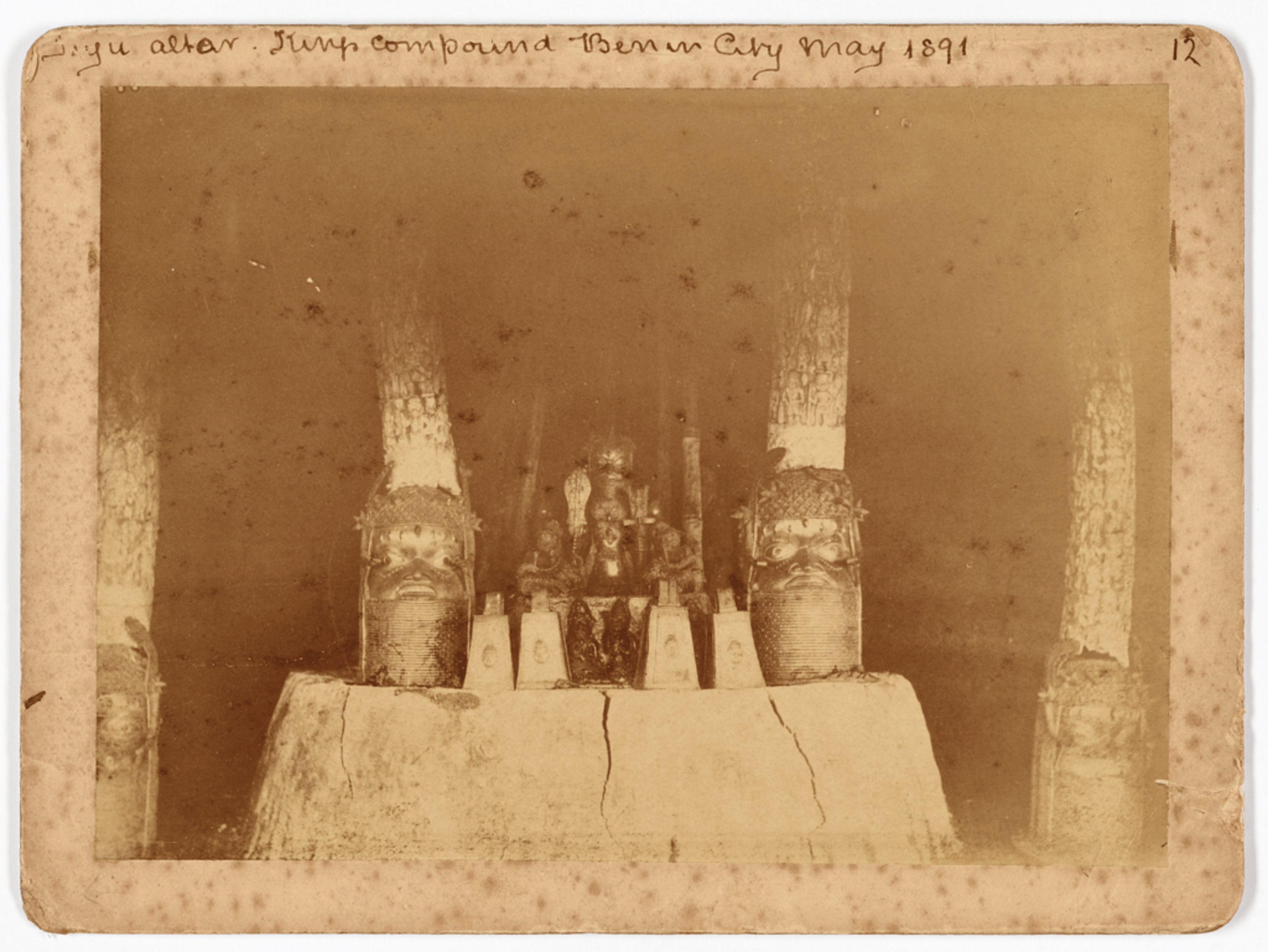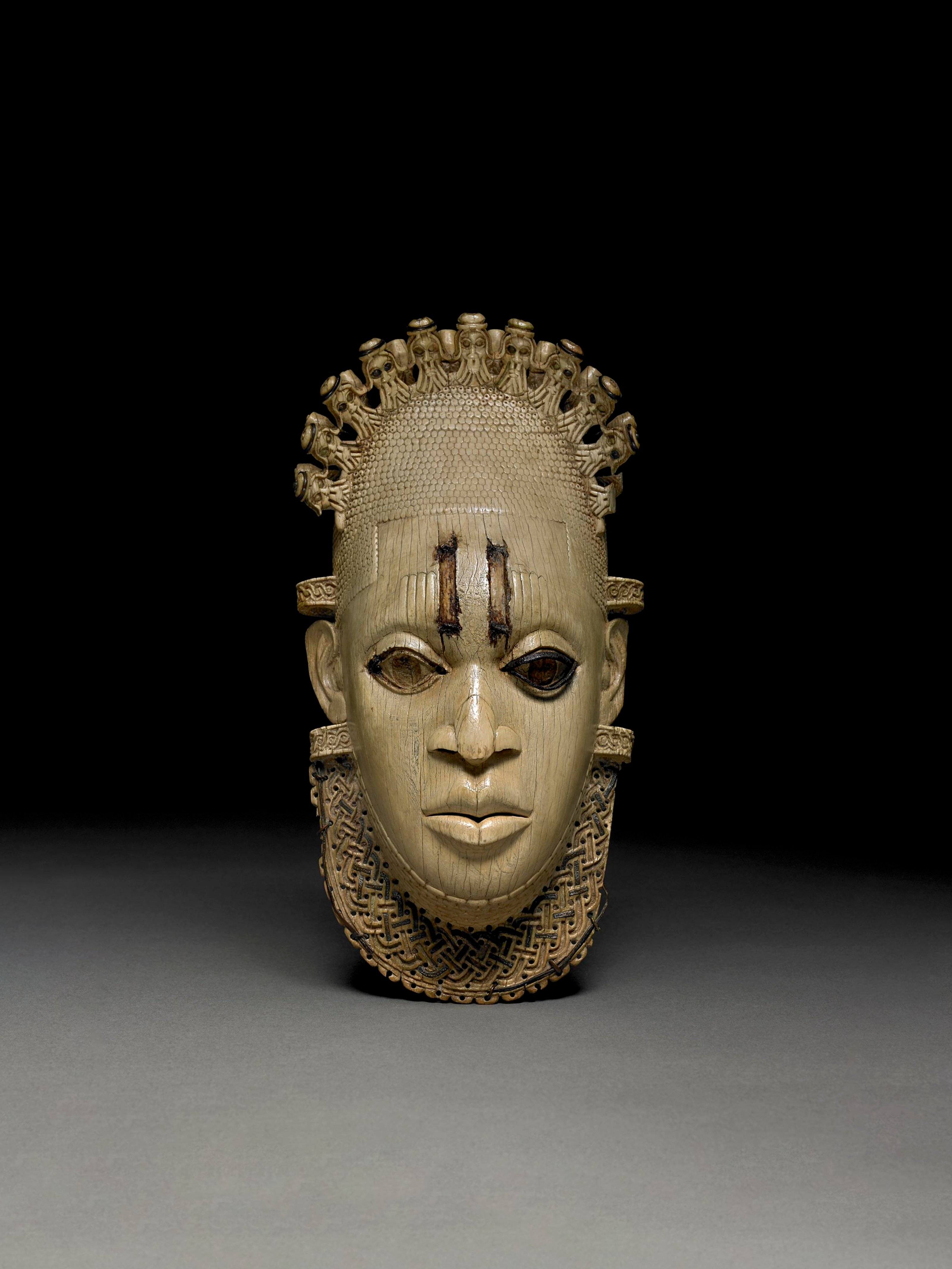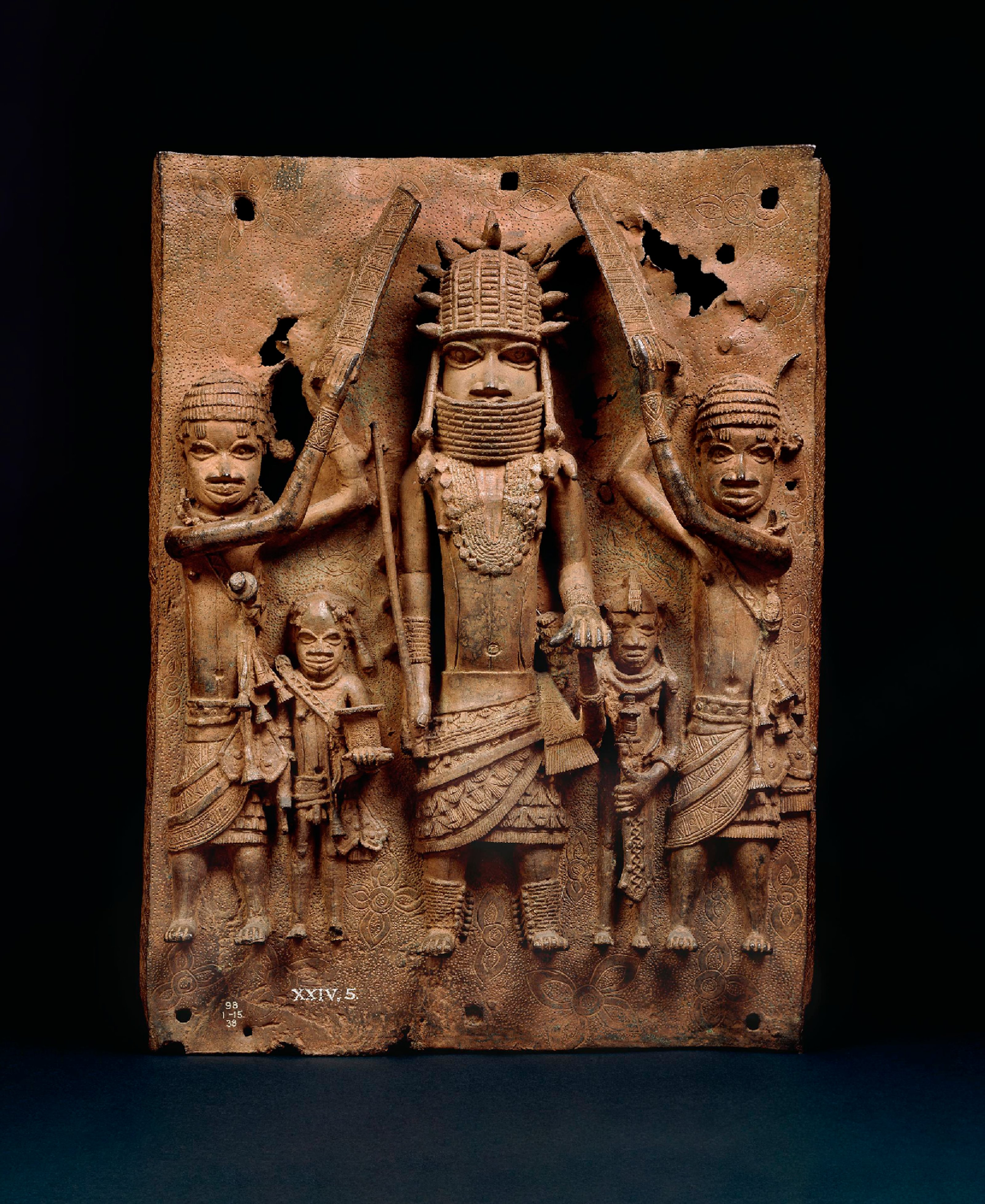In the Second Installment of our column on object repatriation and cultural restitution, the Collecteurs team asks: why can’t the owners of the Benin Bronzes simply return them? The Bronzes are frequently in the news as a flagship case for repatriation, but what does this mean to collectors, and what is at stake? At Collecteurs, this discussion ties into one of our key values to openly discuss the ethics of collecting. In this column, we keep you updated on past and ongoing repatriation cases and frame what they mean in the global art economy. And so, we ask, why are the Benin Bronzes scattered around the globe, and what is preventing them from returning home?

The Benin Bronzes are perhaps one of the best-known examples of a group of objects taken through force and scattered around museums and private collections.1 This assortment of objects is not comprised only of bronzes: the name is a catch-all for a group of brass bracelets, engraved ivory tusks, iron masks, and other artifacts made of leather, coral, wood, and bronze pillaged from Benin City, a former kingdom and now the capital of the Edo state of Nigeria, in 1897.2 The most recognizable Bronzes are the 900 brass plaques dated to the 16th and 17th centuries, which were initially nailed to the pillars in Benin City’s royal palace.3
Benin City (originally called Edo) was the capital of the once wealthy and powerful Kingdom of Benin. Its wealth came in part from its strategic location as a trading hub that connected the interior of the African continent through river systems with the Bight of Benin and the Atlantic Ocean.4 In January of 1897, British official James Phillips made a trip from the coast of Nigeria to Benin City to ask the Oba (king) if his government could stop interfering in British trade. Phillips never returned to his post. The following month, the British set up a “retaliation mission,” sending 1200 soldiers on a violent raid of the city where they stockpiled everything of value in the King’s palace and surrounding houses. “They were our documents, our archives, the 'photographs' of our kings,” said Edo artist Victor Ehikhamenor in an interview with BBC reporter Barnaby Phillips. “When they were taken, our history was exhumed.”5
Though activists have requested the return of these objects since the 1930s,6 only a few of the Bronzes have returned home. Some of these returns have just happened in the past three years, prompting increased media coverage of this case. Germany made a significant return of objects in late 2022 stemming from museum collections spread over Berlin, Hamburg, Cologne, Dresden, Leipzig, and Stuttgart.7 Institutions in the United States, such as the Smithsonian, have already committed to returning their collections. In the United Kingdom, there are ongoing discussions about returns in accordance with national laws concerning which artifacts can leave the country.

Why has this process taken so long?
It’s not because the Bronzes are shrouded in mystery. The Edo people have long requested this return publicly. Several high-profile cases have arisen where institutions made public declarations about returning the Bronzes8 but failed to do so; others—most infamously, the British Museum—outright refused.9 The objects’ whereabouts are well known, and if European establishments are worried that Nigerian institutions are ill-equipped to care for the Bronzes,10 the Edo Museum of West African Art in Benin City, designed by the Ghanaian-British architect David Adjaye to house the Bronzes, opens in 2026.11 Though collectors and institutions have publicly stated their intentions to return these objects, nearly a full century has passed of almost entirely unheeded requests.
If the market continues to incentivize buying and selling “exotic treasures” to the West (whose values grow exponentially with time), collectors feel no incentive to give them back. The Benin Bronzes have been great investment pieces for collectors and museums, who can sell them off for millions of dollars when necessary. The price for a Bronze began to soar in the 1950s when Sotheby’s London sold a head for £5,500—the previous record was £780. In 1968, the standard rocketed to £21,000 when Christie’s sold a similar head. The going rate ballooned in 2007 when Sotheby’s New York sold a head for $4.7m (£2.35m). In 2021, the BBC profiled a woman looking to sell a Benin Bronze for £10 million that had belonged to her father.12 He had purchased the bronze for £230 (over £7000 in today’s currency) in 1951 for this exact reason: he knew it would guarantee his family’s financial security.13
Despite these recent examples, public opinion around the sale of Indigenous artifacts has started to turn, meaning that artworks that were stolen or given up in duress have not sold as well in the auction sphere as they used to. For example, in November 2021, an auction of pre-Columbian artifacts from Mexico flopped, making only half of its presale estimate.14 Perhaps, finally, collectors are refusing to bid against the Indigenous communities who are asking for their belongings to be returned.15
The private sale of such artifacts is only one part of the equation as to why the Benin Bronzes have stayed overseas. One argument presented against cultural restitution is that museums have a duty to educate visitors, so returning the collection would prohibit public education. Unlike private collections, which largely exist for the collector’s enjoyment, museums have always tried to educate the masses, even in the 19th century.16 When the Benin Bronzes were first displayed in 1897 in London, the English public had to grapple with their preconceived notions about Africans as “primitive” peoples: the objects they saw in the vitrines were intricate, sensitive, powerful, and hundreds of years old.17 This artistic sensibility meant that Africans recorded history in a manner equally valid to Europeans and had done so for hundreds of years before colonization. When faced with the Bronzes, Londoners had to admit that African people had their proper histories and cultures.
Cross-cultural education is invaluable, but it no longer requires the presence of the original object: we now possess the technology to create intercultural exchange without the objects present. An institution such as the British Museum could explore 3D scanning technologies to create physical replicas18 rather than holding on to 944 Benin Bronzes, some of which lie permanently languishing in storage facilities.19 The British Museum’s crimes are not obscure—its history of theft and conflict is well documented by several writers.20 But they aren’t the only ones to blame for clasping onto their collection of stolen goods. Other institutions are guilty of the same unethical practices: the Penn Museum in Pittsburgh, the Pitt Rivers Museum in Oxford, and the Weltmuseum in Vienna are among institutions that own hundreds of Benin Bronzes who have not committed to returning them.21 Could advances in educational technology persuade them?

Despite the economic and personal incentives, several institutions have found a conscience in the past few years and are returning the Bronzes to Nigeria. Institutions such as the Smithsonian in the United States, the Horniman Museum and Gardens in England, and several institutions in Germany have either already returned their collection of Bronzes or will return them this year. These institutions are setting great examples for the rest of the world, but as long as the governments and people of North America and Europe view objects like the Benin Bronzes as marketable instead of evidence from a crime scene, the art world will continue to breed and encourage looting and shady backdoor deals. As long as the Bronzes remain out of Nigeria, Pitt Rivers curator Dan Hicks writes, “the damage is renewed every day that the museum doors are unlocked and these trophies are displayed to the public.”22
Interesting or persuasive ideas against restitution do arise. In the case of the Benin Bronzes, a group of African Americans who trace their lineage to Benin City is suing the Smithsonian for returning their Bronzes. The group claims that since the Beninz Bronzes were used to sell their ancestors into slavery, a part of that history must exist in the United States.23 In this case, replicas would not be a substitution for cultural artifacts as there is an ancestral lineage through the original objects that the plaintiffs wish to be in relation to. Though the Nigerian government finds the argument laughable, the case highlights that colonization didn’t only scatter objects—it scattered people. So, how will governments account for this when considering cultural restitution in the coming years?
As the Benin Bronzes gain more news coverage and it becomes the norm for institutions to discuss the return of their stolen collections, it is inevitable that not every case of repatriation will be clear-cut. Just as colonization and its aftermath are messy, so are the consequential cases of non- or de-colonial action: there is more complexity and nuance than meets the eye. Nevertheless, as more institutions realize they were wrong to take on the objects in the first place, discourse around cultural restitution can also become more nuanced as museological institutions reconsider their role in contemporary society.